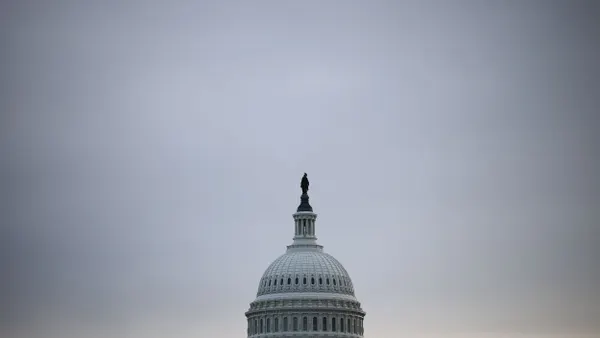Dive Brief:
- Humana beat earnings expectations for the first quarter and reaffirmed its 2025 guidance on Wednesday, after medical costs came in as predicted. It’s a positive development for the insurer, which has been rocked by higher spending in privatized Medicare plans and the safety-net Medicaid program.
- Humana attributed the results to higher Medicare and Medicaid premiums and membership growth in Medicare prescription drug plans and state contracts. Earnings were offset somewhat by an ongoing decline in Medicare Advantage membership after Humana culled underperforming plans to resuscitate margins this year.
- However, it’s still early in 2025, so Humana is remaining cautious when it comes to medical utilization, executives said. The payer’s outlook is also complicated by uncertainty stemming from its ongoing legal bid to improve MA quality ratings.
Dive Insight:
The first quarter got off to a rocky start for the insurance sector after UnitedHealth, the largest private payer and the first to report earnings each season, flagged an unanticipated uptick in medical utilization in MA and slashed its 2025 profit outlook. Shares in managed care organizations fell as a result.
However, Humana, the second-largest MA payer after UnitedHealth, said that medical costs are in line with expectations and reported revenue of $32.1 billion, up 8% year over year.
Profit of $1.2 billion was up a whopping 68% compared to the first quarter last year when the payer experienced surging medical expenses.
“Unexpected MA moving parts at competitors so far this earnings season, probably have investors nerves a little frayed,” wrote Jefferies analyst David Windley. “[Humana’s] results should be a calming influence.”
The company’s insurance business posted a medical loss ratio, a key marker of spending on patient care, of 87.4%, down from 89.3% same time last year. Humana attributed the improvement to lower spending versus premiums in Medicare prescription drug plans due to provisions in the Inflation Reduction Act, and individual MA becoming more profitable after the insurer exited underperforming markets and cut benefits for 2025.
Humana continues to expect it’ll lose roughly 550,000 individual Medicare Advantage members this year — roughly one-tenth of its individual MA footprint last year — as a result of the cuts, implying some additional attrition over the course of 2025, analysts said.
The loss of MA members was coupled with membership gains in Medicare prescription drug plans and in state-based contracts like Medicaid, which tend to carry higher medical costs. That membership makeover, along with a heavy flu season, offset improvements in MLR somewhat, executives said.
However, Humana likes where its membership — now at 14.8 million, down from 16.3 million at the end of 2024 — ended up, according to George Renaudin, Humana’s top insurance executive.
“What we’re seeing is a shift to higher lifetime value segments in membership,” Renaudin said on a call with investors Wednesday morning, adding that Humana is gaining members in some of its best-performing markets like Florida, Illinois and Texas.
“We want members with sustainable margin and we’re pleased with the progress we’ve made there,” Renaudin said.
Overall, Humana’s insurance segment brought in almost $1.6 billion in operational income in the quarter, up 75% year over year.
Humana’s results “look really good,” wrote Whit Mayo, an analyst with Leerink Partners, in a note.
Still, Humana’s stock was largely flat following the earnings release despite its outperformance in the quarter, a market reaction that reflects the uncertainty facing the payer.
CEO Jim Rechtin cautioned investors that earnings could decline in subsequent quarters.
“I will note that some of the outperformance in the quarter is timing related. It is also still early in the year so we are continuing to monitor trends,” Rechtin said on the call.
One big question mark hanging over Humana’s future earnings stems from the company’s ongoing lawsuit against the CMS seeking to improve its MA quality ratings, called stars.
Humana’s stars fell drastically after regulators in the Biden administration tweaked how the ratings are calculated — and since stars are tied directly to plans’ bonuses in MA, if the lawsuit is unsuccessful it could cost Humana billions of dollars in revenue next year.
Earlier this month, federal regulators rejected Humana’s internal appeal to bump its stars. At the time, Humana urged the court to settle the matter by April 30 — Wednesday.
Yet “there’s nothing new on our litigation related to CMS’ 2026 star ratings. We’re still waiting on a ruling. I think the best way to describe where we are at at this moment is, while there are still challenges to navigate, there are no surprises,” Rechtin said.
Last fall, Humana said it planned to invest a few hundred million dollars into strengthening its operating performance, including its stars. Many of those investments ramped up in the first quarter, including around closing care gaps and medication adherence campaigns, executives said.
Humana is also working on plan bids for 2026, with the goal of diversifying certain contracts to improve stars.
“If you set stars aside, we feel good about the underlying progress of the business. The challenge is of course to reconcile that with the stars outcomes that are unknown,” Rechtin said.
Humana is also focused on expanding its health services division CenterWell, which posted operational income of $392 million in the quarter, up 39% year over year. Its primary care division expects to add up to 30 new centers this year.
Meanwhile, CenterWell Pharmacy was recently selected as the fulfillment pharmacy in a new partnership between drugmaker Novo Nordisk and a raft of telehealth companies meant to increase access to in-demand weight loss medication Wegovy.















